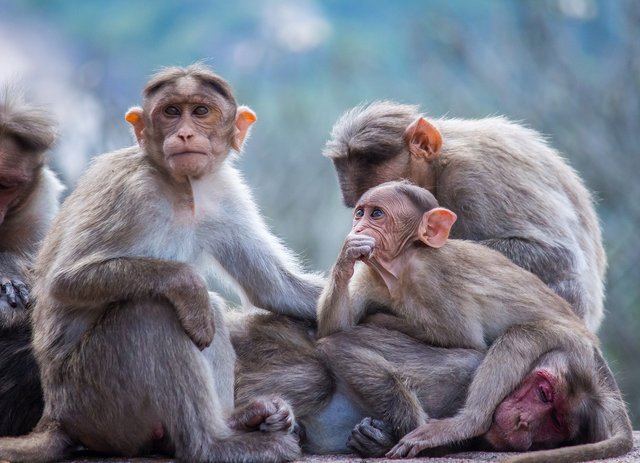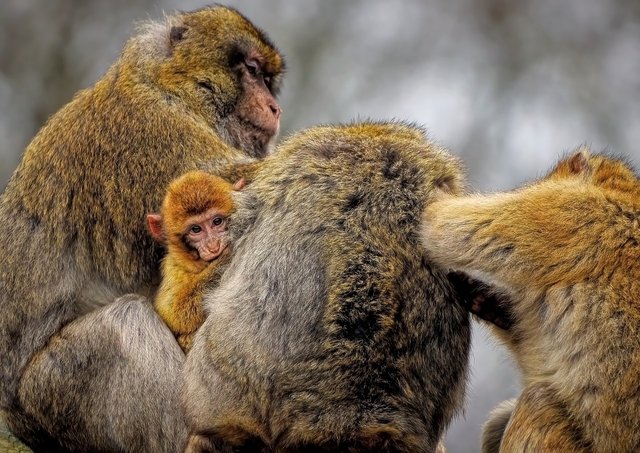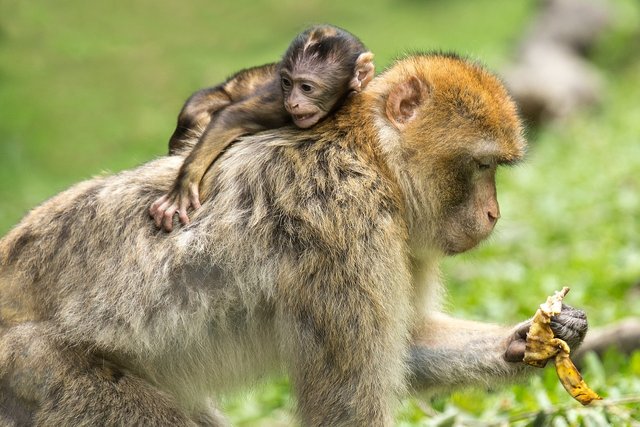The togetherness of monkeys is worthy of recognition

Monkeys are intelligent primates that live in complex social groups. They are known for their human-like social behavior, including the formation of hierarchies, complex communication, and the use of simple tools. The way they weave their lives together reflects a strong adaptation to their environment.
Groups of monkeys usually consist of several tens to several hundred individuals, depending on the species. Living in groups provides great advantages, such as protection from predators, shared access to food sources, and social support. Hierarchy within monkey groups is generally defined by dominant and subordinate status, often based on physical strength and social prowess.

One interesting aspect of monkeys' lives is their social interaction patterns. They use various forms of communication, including voice, facial expressions, gestures, and body language to convey information and build social relationships. For example, monkeys often groom each other to strengthen social bonds and remove parasites from their bodies.
Food also plays an important role in monkey group dynamics. They are usually omnivorous, consuming fruit, leaves, shoots, and sometimes insects or other small items. Because food sources are often scattered, they spend most of their day searching for food. They utilize their group's collective knowledge to find and access necessary food resources.

In monkey groups, reproduction and care of young are also important aspects of their social life. The female usually has the dominant role in caring for the young, although there is variation between species. This behavior helps ensure the survival and reproductive success of the group as a whole.
However, monkeys' lives are not always peaceful. Conflict in the form of competition for food, social status, or mating rights may occur. These conflicts are often resolved through intimidation, threatening gestures, or in extreme cases, physical fighting between individuals. However, monkey groups also show the ability to forgive and rebuild social relationships after conflict.
Environmental changes and interactions with humans have affected the survival of many monkey species around the world. Deforestation, illegal hunting and trade in wild animals increasingly threaten their populations. Conservation efforts are important to protect their natural habitat and ensure the monkey species' future survival.
Overall, the lives of monkeys demonstrate extraordinary social complexity and adaptation to their environment. The study of their behavior provides valuable insights into the social evolution, communication and adaptation of non-human animals, and reminds us of our responsibility to protect their existence on this planet.
Upvoted. Thank You for sending some of your rewards to @null. It will make Steem stronger.